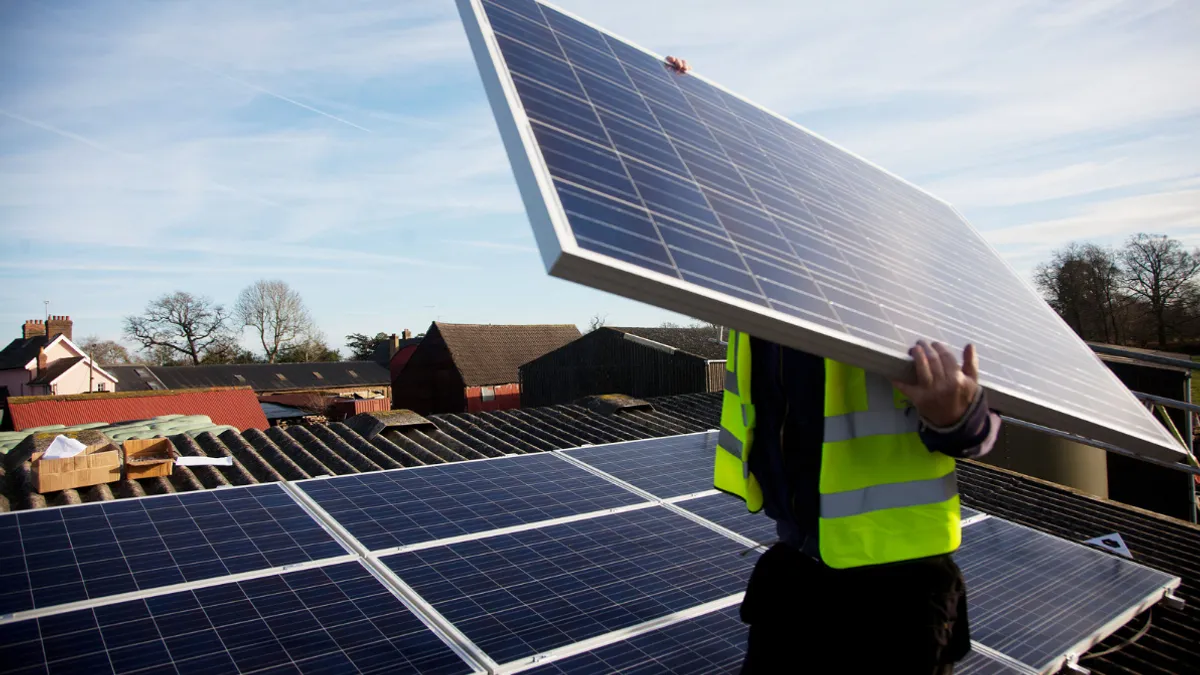Dive Brief:
- Maryland school officials opened the first net-zero energy school in the state on Monday, according to The Baltimore Sun.
- In addition to energy-efficient elements like insulation, a geothermal heat pump and programmable lights, Wilde Lake Middle School in Columbia, MD, also includes 2,000 solar panels — 1,400 on the roof and 600 on the ground.
- Builders included an "energy kiosk" with a data panel and dashboards in a main area of the school so that students can see how much energy the building is generating and saving.
Dive Insight:
While the Maryland Energy Administration funded Wilde Lake’s energy-saving design with a $2.7 million grant, the U.S. Department of Energy is also at work to promote efficiency in schools nationwide. Last month, the agency unveiled its Better Buildings Zero Energy Schools Accelerator program, which promotes efficient educational facility design. The department said the program could help schools reduce their energy use 65% to 80% by using natural daylight and modern HVAC systems, while also giving instructors the tools to teach their students about conservation. The DOE also said that energy-saving elements provided a better learning environment for students.
As several states embark on school modernization programs, many school boards have insisted that the new facilities incorporate the latest in energy-saving design. In January 2016, Skanska USA won a $72 million contract to renovate Washington, DC’s largest elementary school, Lafayette Elementary, with the remodel including such features as green roofs and storm water management as vehicles to achieving LEED Gold status. In addition, late last year, Balfour Beatty secured a $110 million contract with Highland Park Independent School District to build and overhaul several schools in the Dallas suburb, with the new facilities including sustainable features.
Net-zero energy buildings are designed to create as much energy as they use. In June, the World Green Building Council gave the net-zero movement a boost when it announced its "Advancing Net Zero" initiative and set a goal of 100% net-zero buildings by 2050. The WGBC also set a shorter-term goal of all new buildings and major renovations being outfitted for net-zero energy by 2030.













